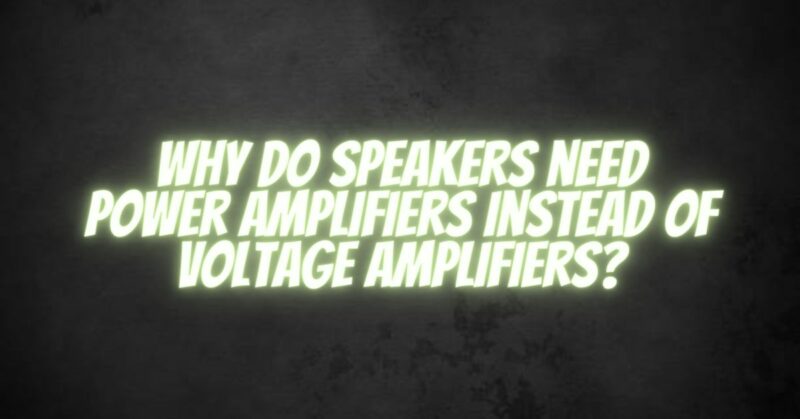In the world of audio reproduction, amplification is a critical element that bridges the gap between electronic signals and the sound we hear through speakers. When it comes to driving speakers, power amplifiers play a pivotal role, and they are distinct from voltage amplifiers for good reasons. In this article, we will explore why speakers need power amplifiers instead of voltage amplifiers and the essential differences between these two types of amplification.
Understanding the Basics
Before diving into the specifics, let’s clarify the fundamental difference between voltage amplifiers and power amplifiers.
- Voltage Amplifiers: Voltage amplifiers, often referred to as preamplifiers, are responsible for increasing the voltage of an incoming audio signal. They typically have a gain range from 1 to 10 and are designed to provide signal conditioning, volume control, and source selection. In essence, voltage amplifiers prepare the signal for further amplification but are not meant to drive speakers directly.
- Power Amplifiers: Power amplifiers, on the other hand, take the preamplified signal and provide the necessary power to drive speakers. They have a much higher gain, typically in the range of 20 to 60 dB or more, and their primary function is to convert a low-voltage, high-current signal into a high-voltage, high-current signal capable of moving speaker drivers and producing sound.
The Speaker Load
One of the key reasons why speakers need power amplifiers is the nature of the speaker load they present. Speakers are essentially electromechanical transducers that convert electrical energy into sound waves. To do this effectively, they require a significant amount of power, and this power is determined by the speaker’s impedance (measured in ohms) and the desired sound pressure level (volume).
Voltage amplifiers are not designed to deliver the high current levels required to drive speakers. They are optimized for low-current, high-impedance loads such as headphones or line-level equipment. Trying to use a voltage amplifier to power speakers directly would result in inadequate current delivery, leading to distortion, overheating, and possible damage to both the amplifier and the speakers.
Power Efficiency
Another crucial factor is power efficiency. Power amplifiers are engineered to be highly efficient in delivering power to speakers. They are designed to minimize wasted energy as heat and maximize the power transferred to the speakers. This efficiency ensures that the speakers receive the necessary current to reproduce sound accurately, without distortion or clipping.
Speaker Protection
Power amplifiers are equipped with various protection mechanisms, such as overload protection and short-circuit protection, to safeguard both the amplifier and the speakers. These protections are essential, especially when dealing with dynamic audio signals that can vary widely in amplitude. Voltage amplifiers, lacking these protections, would be ill-suited for direct speaker driving.
Conclusion
In the world of audio, the use of power amplifiers instead of voltage amplifiers to drive speakers is not a matter of choice but a necessity dictated by the physics of sound reproduction. Power amplifiers are designed to meet the specific demands of speakers, delivering the required current and power efficiently while protecting both the amplifier and the speakers from potential damage. So, the next time you enjoy your favorite music through a set of speakers, remember that it’s the power amplifier that provides the muscle to bring that music to life.


